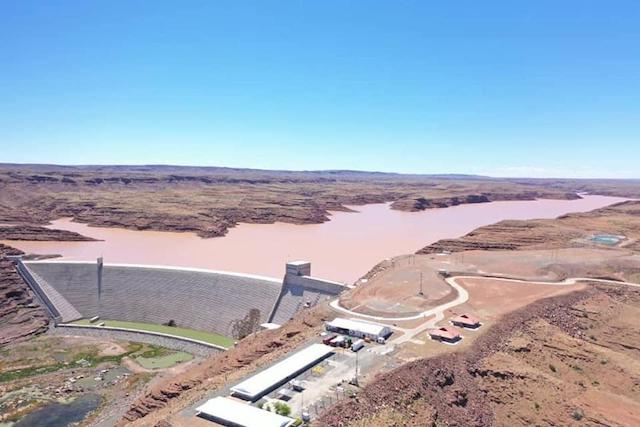SINCE THE DEVELOPMENT of the Neckartal Dam’s infrastructure and the land to be irrigated did not take place at the same time, some technical and financial concerns have arisen.
The dam is already not only holding sufficient water for its intended purpose, but is actually overflowing.
The first concern is that the rate of evaporation in the area is 3 800 mm per year, which gives an average of 10,4 mm per day. There is some conflicting information about the surface area of the dam, giving it as anything from 25 km² to 35 km².
This means an average of about 260 000 m³ of water evaporates from the dam’s surface per day, which is sufficient to irrigate from 25 to 50 ha of planted fields.
The second concern is that the total expenditure of N$5,7 billion for the construction of the dam is equal to the total input cost of 39 ha for every day that goes by, or the input cost of planting 14 235 ha in a year.
The entire envisaged area to be cultivated is only about a third of this.
Although the construction of the dam represents probably more than 90% of the total project expenditure on infrastructure, this does not hold true from a practical point of view.
The cultivated fields cannot function without the dam, nor can the dam serve its main purpose without these fields.
Since they are fully interdependent on each other, it can be reasoned that each contributes 50% to the project as far as utilisation or functionality is concerned, and the development is now only halfway complete, since one factor is completely absent: No information seems to be available as to the exact area that is to be irrigated.
However, for a project of this type, overhead sprinkler irrigation by means of centre pivots is by far the preferred method.
If an area of 5 000 ha is the total area under consideration, then the true area to be irrigated would be considerably less.
This does not make provision for roads, movement, storage, processing, residential and other areas, nor for any areas that may be unsuitable for cultivation due to soil type or depth, drainage/waterlogging issues, topography, accessibility, or any other of many potential reasons that may further reduce the usable area.
In my very humble opinion the Neckartal Irrigation Scheme may currently very well be the biggest drain on the Namibian economy.
It is not a question of preventing this new ‘pride and joy’ of the Namibian people from becoming another Air Namibia, it is a question of getting it out of its current state, because it is already there.
The development and commissioning of the project should therefore be expedited to minimise severe losses that are already occurring.
Namibia Is Dying
Stay informed with The Namibian – your source for credible journalism. Get in-depth reporting and opinions for
only N$85 a month. Invest in journalism, invest in democracy –
Subscribe Now!










